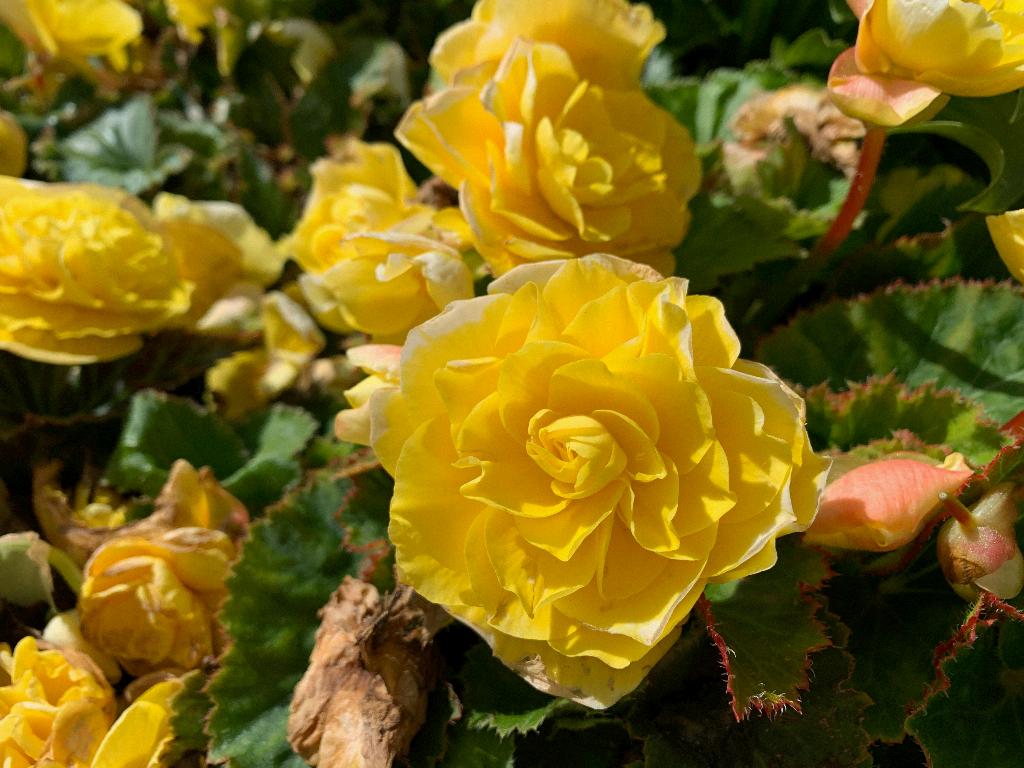When it comes to adding vibrant colors and lush foliage to your garden or indoor space, begonias undoubtedly steal the spotlight. These versatile plants come in a variety of types, including annuals and perennials, and are cherished for their ability to thrive in partial shade conditions. Whether you are a seasoned gardener or a beginner looking to enhance your green thumb, understanding how to care for begonias is essential to ensuring their health and longevity.
Overview of Begonia Plant Care
Begonia plant care encompasses a range of factors, from selecting the right varieties to providing optimal growing conditions. As we delve into the intricacies of begonia care, you will discover the key steps and practices that will help your begonias flourish.
Choosing the Right Begonia Varieties for Your Space
Before embarking on your begonia care journey, it is crucial to choose the right varieties that suit your space and preferences. Whether you opt for wax begonias, tuberous begonias, or rex begonias, each type has unique characteristics and requirements that you must consider.
Essential Growing Conditions for Begonias
Light Requirements for Begonias
Begonias thrive in bright, indirect light but can also tolerate partial shade. Avoid exposing them to direct sunlight, as this can lead to leaf scorching. Position your begonias in an area with morning sun and afternoon shade for optimal growth.
Watering Needs and Soil Requirements for Begonias
Keeping the soil consistently moist is crucial for begonias, but they do not appreciate waterlogged conditions. Use well-draining soil with high organic content to prevent water stagnation and root rot. Water your begonias when the top inch of soil feels dry to the touch.
Temperature and Humidity Considerations for Begonias
Begonias prefer moderate temperatures ranging from 65 to 75°F (18 to 24°C) and thrive in humid environments. Avoid exposing them to cold drafts or extreme temperature fluctuations, as this can adversely affect their growth.
Pruning and Deadheading Begonias
Regular pruning and deadheading help maintain the health and appearance of your begonias. Remove spent flowers and yellowing leaves to stimulate new growth and prevent disease spread. Prune leggy stems to encourage bushier growth.
Fertilizing Begonias: Tips and Best Practices
Feeding your begonias with a balanced fertilizer during the growing season is essential for promoting healthy foliage and vibrant blooms. Choose a fertilizer formulated specifically for flowering plants and follow the manufacturer’s instructions for application frequency.
Dealing with Common Pests and Diseases That Affect Begonias
Despite their resilience, begonias can fall victim to pests such as aphids, spider mites, and powdery mildew. Keep a vigilant eye on your plants and promptly treat any infestations with natural or chemical remedies to prevent further damage.
Propagating Begonias: Methods and Techniques
If you wish to expand your begonia collection or share your plants with friends, propagation is a rewarding endeavor. Whether through stem cuttings, leaf cuttings, or division, there are various methods to propagate begonias successfully.
Overwintering Begonias: Preparing Your Plants for the Cold
As winter approaches, it is essential to prepare your begonias for the colder months. Bring outdoor begonias indoors before the first frost, reduce watering, and provide adequate warmth and humidity to ensure their survival during the dormant period.
Conclusion: Mastering the Art of Caring for Begonias
By mastering the art of caring for begonias, you can create a stunning display of colors and textures in your garden or home. With proper attention to detail, from selecting the right varieties to maintaining optimal growing conditions, your begonias will reward you with their beauty and resilience. Embrace the joy of nurturing these enchanting plants and watch them flourish under your care!

